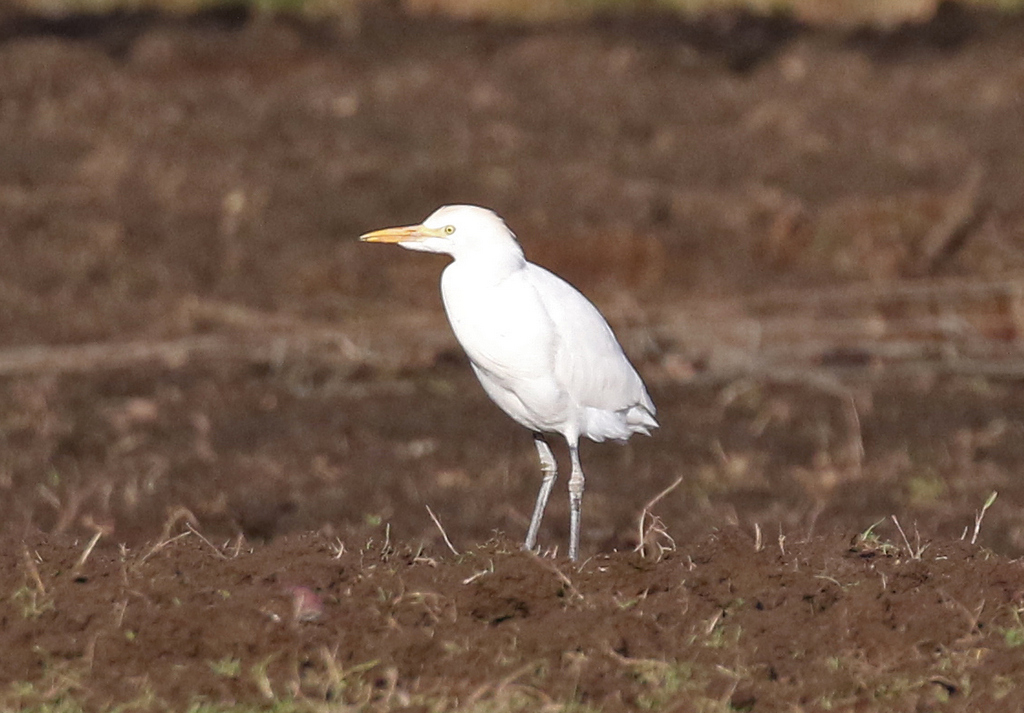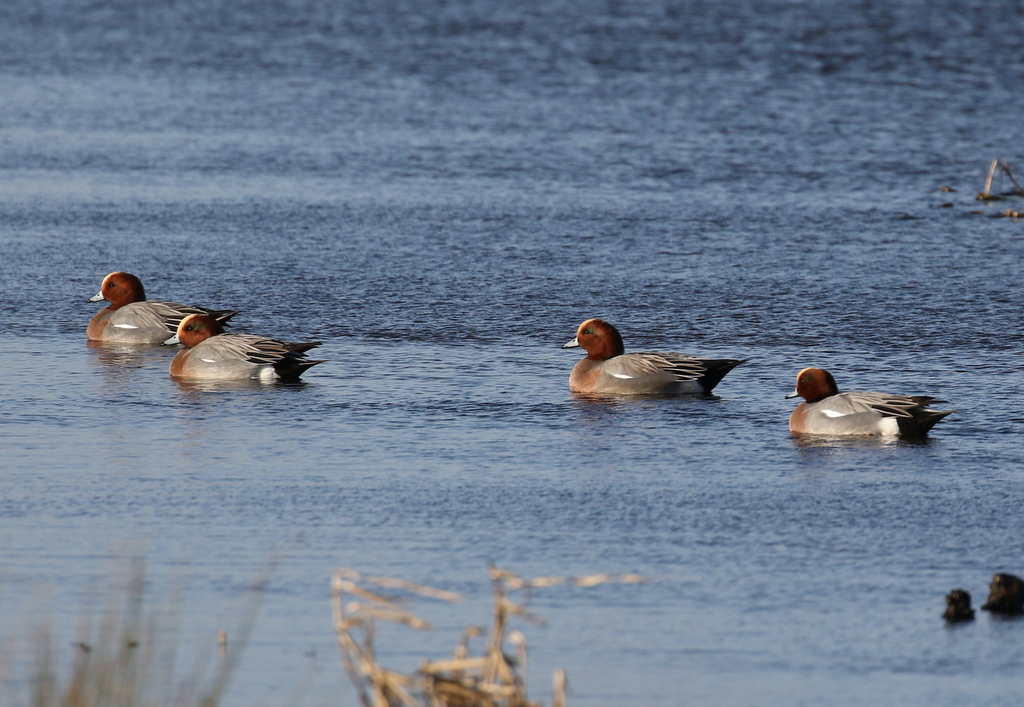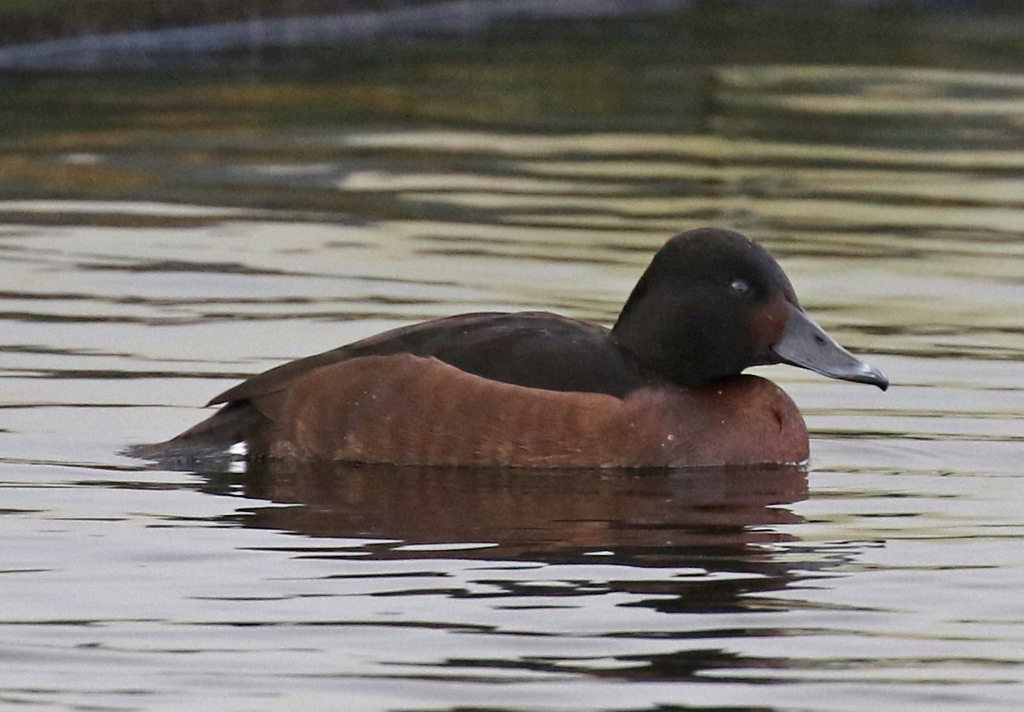Day 2 of a three day Winter Tour in Norfolk, and we would be heading down to the Broads today. We were blessed with another dry day, but it was very windy at times.
As we got down into the Broads, we started to see more Rooks in the fields. They are much commoner here than in North Norfolk. We passed a couple of Marsh Harriers hunting too. As we came into Ludham village, we decided to have a quick look down on St Benet’s Levels, just in case the swans were down there today. We found several Mute Swans but nothing else.
We were just leaving when one of the locals, who was counting them for the International Swan Census, very helpfully stopped to tell us that the swans were on Ludham Airfield this morning, just where we were heading next. He directed us to the south-eastern corner.
We drove straight over and could see the swans feeding in a recently harvested sugar beet field. We found somewhere to park off the road and got out. It was a nice mixed herd, with both Whooper Swans and Bewick’s Swans together. It was good to see the two species side by side, the Whooper Swans noticeably bigger, with more extensive yellow on the bill extending down towards the tip in a wedge.

We counted 50 birds, of which 15 were Whoopers and the rest Bewick’s Swans. There were several Egyptian Geese in the field too, further back. It was open and exposed out on the old airfield, and the rather biting wind was cutting across, so after all having a good look at the swans, we moved on.
Our next stop was near Acle. As we drove up, we could already see several Common Cranes in the maize stubble. When we parked and got out, we could see a total of seven together in the nearest field, a group of four and a family of three still with their juvenile from last year. We got them in the scope and had a great view of them.

There were at least three more Cranes further back, in the next field, beyond the reeds lining the ditch. Then another six flew up from further over. They only flew a short distance, before dropping back down out of view, but it was nice to see some in the air too. That meant at least sixteen Cranes in total.
There had been some geese down towards Great Yarmouth yesterday, on the grazing marshes along the Acle Straight. It was not far so we drove down to look, but there was no sign of any geese there today. Two temporary shooting butts, made of camo netting, had been erected in the middle of the field. Presumably someone had been shooting at the geese and they had moved on.
We called in at Halvergate on our way back. There was no sign of any geese down along the Branch Road, but we did find the lone Cattle Egret still with the cattle just before the village. We had a quick look at it, as it walked around between the cows.

Our next stop was at Buckenham. The Taiga Bean Geese had not been reported for a few days, and we assumed they had gone already, but then there was a report of three again yesterday. Unfortunately, when we got there, we found lots of activity down along the railway line, lots of engineers in high viz coats doing works to the line. Unsurprisingly, there was no sign of any geese down along the edge of the grazing meadow closest to the railway line, which the Taigas generally favour.
There were lots of Pink-footed Geese out in the middle of the marshes, but they were keeping tucked down out of the wind, many sleeping. We could see more geese further up but we were looking into the sun from here, so we walked on up to the riverbank. There were plenty of Wigeon around the pools on the right of the track, but not the numbers there were in past years.

It was very breezy out in the middle of the marshes, so we hurried on to the end. We managed to get out of the wind a little by the hide. There were lots of Lapwing out on the grass, and a few Ruff in with them. They were very jumpy in the wind, and kept flying up, whirling round, and dropping back down again. We couldn’t see any raptors over the grazing marsh itself, but we could see a Peregrine further back, hanging in the air around Cantley Beet Factory before landing on the ladder up one of the silos.
There were lots of Canada Geese out in the middle from here, feeding in and around the taller areas of rushes. A small number of White-fronted Geese was in with them. They are much smaller and were hard to see until they raised their heads. There were possibly more asleep we couldn’t quite see. A small group of Barnacle Geese were further back, mixed in with the Canadas.
We braved the wind and walked back, before driving round to Strumpshaw for lunch. There were a few Mallard and Gadwall on the pool in front of Reception Hide. While we ate, a succession of tits were coming and going at the feeders – Blue Tits and Great Tits, and a Coal Tit popped in a couple of times briefly. But there was no sign of any Marsh Tits today.
After lunch, we drove over to Ranworth. A female Ferruginous Duck had been there a few days ago and reported again earlier, so we thought we would take a look. As we walked out onto the staithe at Malthouse Broad, a single tame Pink-footed Goose was in with the Greylags on the green. It looked like it might have been injured in the past. The Ferruginous Duck was swimming around on Malthouse Broad when we got there, amazingly close, just off the Staithe, around the boats. A bit too close really! Ferruginous Ducks are very common in captivity and escapes are regular.

More interestingly, we noticed that this bird bore a striking similarity to one seen here in exactly the same place in January 2017. It had a rather chunky and dark head, with a noticeably paler area around the bill base, in some respects resembling a female Baer’s Pochard. Looking at photos later, the bill pattern was a perfect match for the 2017 bird too. Where has it been since then? The bird from 2017 was accepted as a wild Ferruginous Duck by the British Birds Rarities Committee, so presumably this one will be too!
Otherwise, a Great Crested Grebe asleep with Tufted Ducks out in the middle of the Broad was an addition to the trip list. We walked round to Ranworth Broad, and out along the boardwalk. We hoping to maybe catch up with some redpoll or tits. A Siskin flew over calling, but otherwise the trees were very quiet, despite being more sheltered in here. We wondered whether the birds might be in the gardens, where there might be more food.
We walked on down to the end and scanned the Broad from the platform by the Visitor Centre. There were lots of Wigeon out on the water, and a good number of Shoveler in with them too. The Marsh Harriers were starting to gather over the back of the Broad – it was time for us to be making tracks, so we could get back over to Stubb Mill in time for the roost there.
As we got back to the road, we could hear a Marsh Tit calling from the garden of the house opposite. We scanned the hedge, but could only see a couple of Blue Tits and a Coal Tit. We walked on a few metres and heard it again. From here, we could see down the drive into the garden where lots of birds were coming to some feeders. The Marsh Tit flew in and dropped to the ground under the bird table, grabbing a seed before flying to the bare tree by the garden wall. It made several repeat visits, so we could all get to see it.
We were later than originally planned getting to Hickling Broad tonight, although given the wind we didn’t want to stop too long there, and the light was already going as we walked out to Stubb Mill. A flock of Redwings was in the paddock as we walked out, and although most flew back into the trees, a couple stayed put down on the grass where we could get a look at them.

A couple of Marsh Harriers flew in past us as we walked out, heading in for the roost. When we arrived at the Watchpoint, we discovered we had just missed a couple of Cranes flying off. Looking out towards the ruined mill (windpump!), we could see several more Marsh Harriers up over the reeds, flying in and out of the bushes. We couldn’t see how many were already in, but we had a maximum of 10 or so in the air at any one time.
While we were watching the Marsh Harriers, a male Hen Harrier appeared in with them. We could see a ghostly grey shape with black wing tips, slimmer and smaller than the Marsh Harriers. The Hen Harrier flew back and forth several times, in and out of the trees and in front of the old mill, giving everyone a chance to get onto it.
A Great White Egret flew across over the back of the grazing marshes, heading towards the reserve, presumably going in to roost. We heard Cranes bugling behind us, presumably heading in to roost too over the trees, but we couldn’t see them where we were standing. Then two Cranes flew up from the grazing marshes and circled round, before dropping down into the reeds beyond.
The light was going now. The wind was picking up and with the cloud having thickened it felt like it might rain later. With a long drive back, we decided to call it a night. Still time for more tomorrow!
















